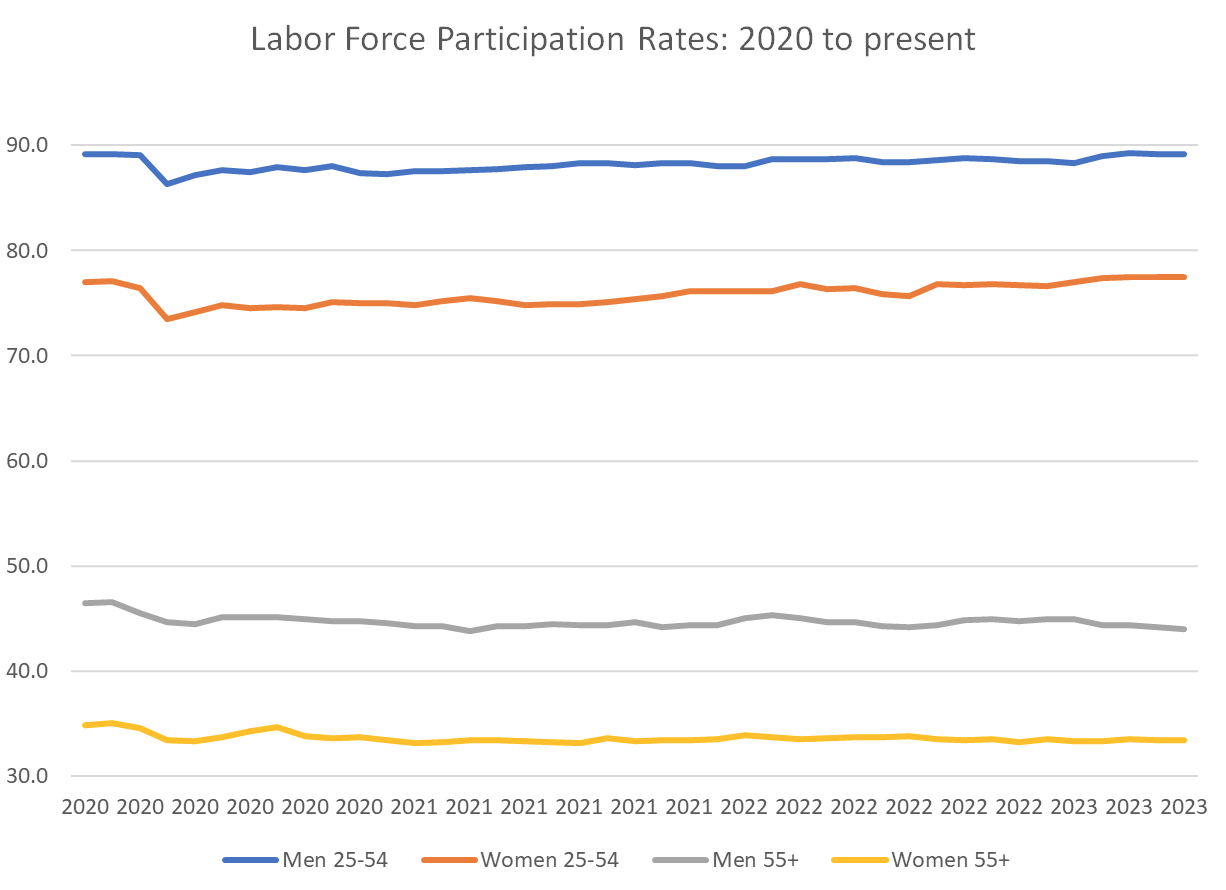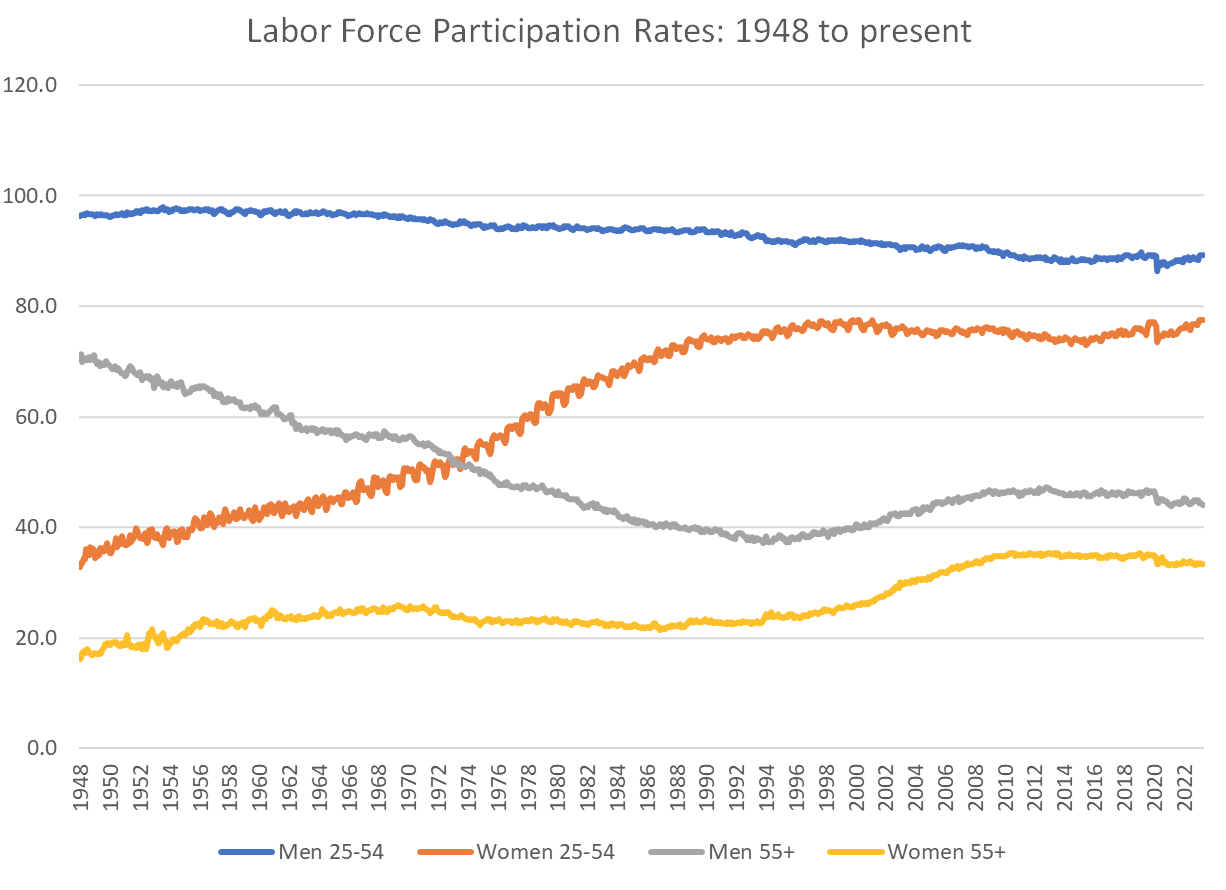The Daily Dish
June 6, 2023
Missing Workers Update
One of the enduring economic phenomena associated with the pandemic is the shortage of labor. Some of it is no mystery. Immigration has been reduced and a tragic number of workers succumbed to COVID-19 itself. But for a while, some workers seemingly just disappeared.
The chart below updates our understanding of labor force participation among prime-age workers (ages 25–54) and older workers (55 and above), for both men and women.
As the chart indicates, prime-age males have exactly recovered the 89.2 percent labor force participation rate that prevailed in February 2020. In contrast, older men and women remain below their pre-pandemic levels: 44.0 percent versus 46.5 percent for men and 33.4 percent versus 35.0 percent for women.
But the big story is prime-age female labor force participation, which stands at 77.5 percent, well above the 76.4 percent in February 2020. Women are back!
The tight focus on the pandemic era obscures the even larger trend. This is shown in the next graph, which tracks labor force participation during the entire post-WWII era. In the big picture, the real story is the decline in labor force activity for men. Although older males’ participation rallied a bit early in this session, it has been declining since the aftermath of the Great Recession.
For women, the story is ever-greater labor force activity. The recent rise in prime-age participation by women brings the rate back to its previous peak in 2000. While older female participation has dropped recently, the broad sweep of the postwar is for greater work in this demographic.
The labor market is ever-so-slowly normalizing in the aftermath of the pandemic. Desired hours of work remain below the pre-pandemic levels and immigration remains depressed, leaving the total work hours available somewhat reduced. But prime-age work activity appears to be back in stride, leaving the labor market in its best shape in several years.
Fact of the Day
Across all rulemakings this past week, agencies published $2 billion in total costs and added 94.1 million annual paperwork burden hours.












